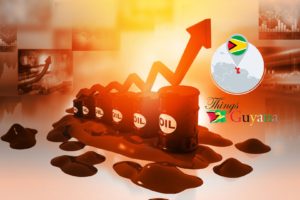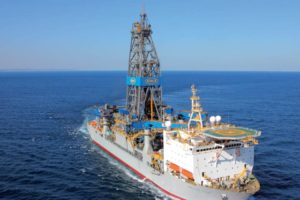Director of the Payne Institute and a Professor of public policy at the Colorado School of Mines, Dr. Morgan Bazilian, believes that no technical barriers exist for piping natural gas from the Stabroek Block to shore for power generation and other applications in Guyana.

Morgan D. Bazilian, Director of the Payne Institute and a Professor of public policy at the Colorado School of Mines – Photo Credit: (OilNow)
He stated that with the Gross Domestic Product (GDP), which is expected to triple in the coming years, it would make the project a reality. It is expected that some 20 percent of the more eight billion barrels of oil equivalent resources discovered at the Stabroek Block are associated with natural gas – which is estimated to be in the order of 9.6 trillion cubic feet.
ExxonMobil, operator at the block, has said the gas from just the Liza field meets the proposed power project requirements in Guyana. However, Dr. Bazilian said that while the cost of such an undertaking will always be challenging, the critical issues that can make or break such projects are governance and ensuring the necessary regulatory framework is in place.
“If you don’t have the governance and regulatory situations, structures in place, which includes institutions, it’s really hard to get that right. So, the technical and financials are one, but the regulation is a third pillar of that, that’s really important,” he said.
Dr. Bazilian, who previously was lead energy specialist at the World Bank, said, however, that while it may be the ideal situation to have all of the regulatory architecture in place before building out the infrastructure, this is rarely the case.
“It rarely works that way. They sort of grew up together; That’s how it was with the fracking revolution in the United States… the technology came, the volumes came, and then the regulators have to catch up. And so, the same is going to happen in Guyana,” he said.
In addition to power generation, he pointed out that there are other uses for natural gas, such as the production of feedstock and fertilizer, which can be used in the agricultural sector and for exports.
“The thing about it is that people always tell countries; they always say, outsiders always say, ‘Oh it’s going to be too expensive; you can’t do it.’ I don’t always buy that perspective. Look, the countries are growing and developing, and they need the infrastructure, and it’s a matter of priorities, and it’s not a matter of some great big technical obstacle. And so, I think that it’s at least worth looking at very, very seriously before dismissing it as undoable. And in a country like Guyana where, theoretically, you will start to become a much higher level of GDP per capita, then building this infrastructure is part and parcel with that kind of development and wealth creation.”
The ExxonMobil-led consortium is currently engaged with Guyana’s Government to explore ways in which the gas could be brought to shore. At present, the gas’s primary use from the fields is for reinjection into the reservoirs, which maximizes crude production.
“The first and highest value of the gas is actually to re-inject it in many of the oil reservoirs to increase the amount of oil [produced]. And so, although we have quite a significant amount of gas discovered, how much of that would be available without impacting the oil recovery over a period of time is something that we still have to evaluate,” President of ExxonMobil Guyana, Alistair Routledge has said.
Dr. Bazilian has over two decades of experience in the energy sector and is regarded as a leading expert in international affairs, policy, and investment. He is also a Member of the Council on Foreign Relations.
[Extracted and Modified from OilNow]
Discover more from Things Guyana
Subscribe to get the latest posts sent to your email.







